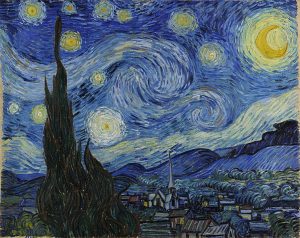
Emperor Rudolf II as Vertumnus by Giuseppe_Arcimboldo
Everyone’s gotta eat. Well, except the robot and the lich I guess. Most of the time food is not an interesting part of a story – it’s something that is assumed to happen, like sleeping, travelling to the next location, or repetitive practice while learning something new.
It can become interesting though if it is somehow special, or if it is not available.
If food is in short supply, starvation becomes a possibility. If lots of people are starving, there can be all sorts of repercussions – MI5 claim that Britain is only four hot meals from anarchy, and that could easily hold true in fantasy worlds, possibly an even smaller margin if people have less to lose.
If the heroes are short of food, (perhaps trapped in a desert, or a dungeon, or a… um… dreadful diner), what would happen to them? The effects of starvation are slow but potentially deadly- 8 to 12 weeks is normal, but people have survived twice that without any food. Initially fatigue and irritability set in, the the body starts to digest its own fat and muscle reserves. Before long it has to move on to internal organs, and by then even if food is made available the victim may be too weak to even try to eat, and if force fed may suffer permanent organ damage. In a heroic fantasy tale, kidney failure does not make for a good story, so under most circumstances main character will probably manage to find food before organ damage sets in.
But what about when food is available?
Usually “and the heroes eat again” is not very interesting, so much so that in D&D “Create Food and Water” is a very low level spell which solves the problem entirely so long as there’s a cleric in the party.
Sometimes, though, food matters. George R. R. Martin is famous for his descriptions of what the characters are eating, and I seem to recall David Eddings describing a meal of bacon and gruel in rather more detail than was necessary.
A special meal deserves mention, though, whether it be in The Hobbit when the dwarves all show up and eat everything in Bilbo’s larder, or the welcoming feast for the new students at Hogwarts in Harry Potter. These feasts tell us something about the characters and the situations – Bilbo is a creature of comfort who keeps plenty of food in his larder, and Hogwarts is a comfortable and welcoming place (at least on the surface).
Food can, then, tell us things. If a lord throws a banquet and everything is delicate little dishes on fine china that says something quite different to a banquet where the centrepiece is a boar the duke hunted himself, and he tears legs off geese and eats them with his bare hands. But in either case it says that this person is rich, and likes to show it off in the form of entertaining and feeding his guests. In one episode of Batman the Animated Series, the extremely fat villain is seen to always be eating, while not allowing his slaves to do the same because they should be working – unsurprisingly he gets quite satisfyingly beaten up by Batman!
Let me finish on an anecdote: I was playing in an epic level D&D game when we entered a halfling city. I decided my character wanted to buy a cake (he was a by this time recovering psychopath, and wanted to treat the party to something nice), so I went into a nearby cake shop and asked for one. The halfling baker – seeing an opportunity to fleece a rich adventurer – upped the price from about two coppers to two silvers. Not knowing anything about the value of money, I apologised and offered a rare astral diamond instead – that was about a million times more than the cake was worth, but I didn’t wait for change. Being an enterprising halfling, he invested the money in some very special equipment, and from that point on magic potions in the form of cakes have been a running joke in our games! [ED: Ginger cake is an especially good source of fire resistance]
Now, I think it’s time I went and made dinner.
p.s. If you like the way we think, take a look at our patreon

